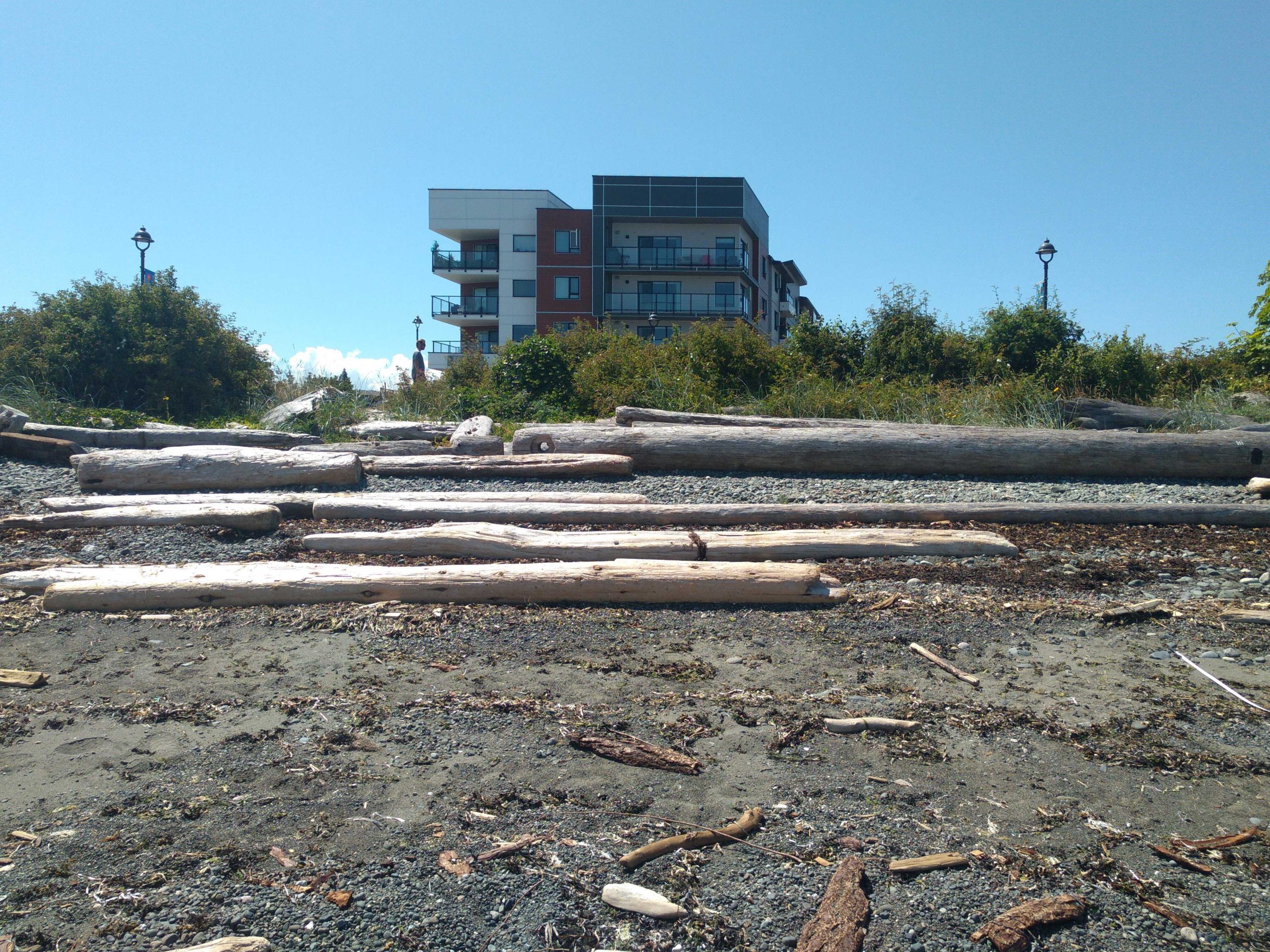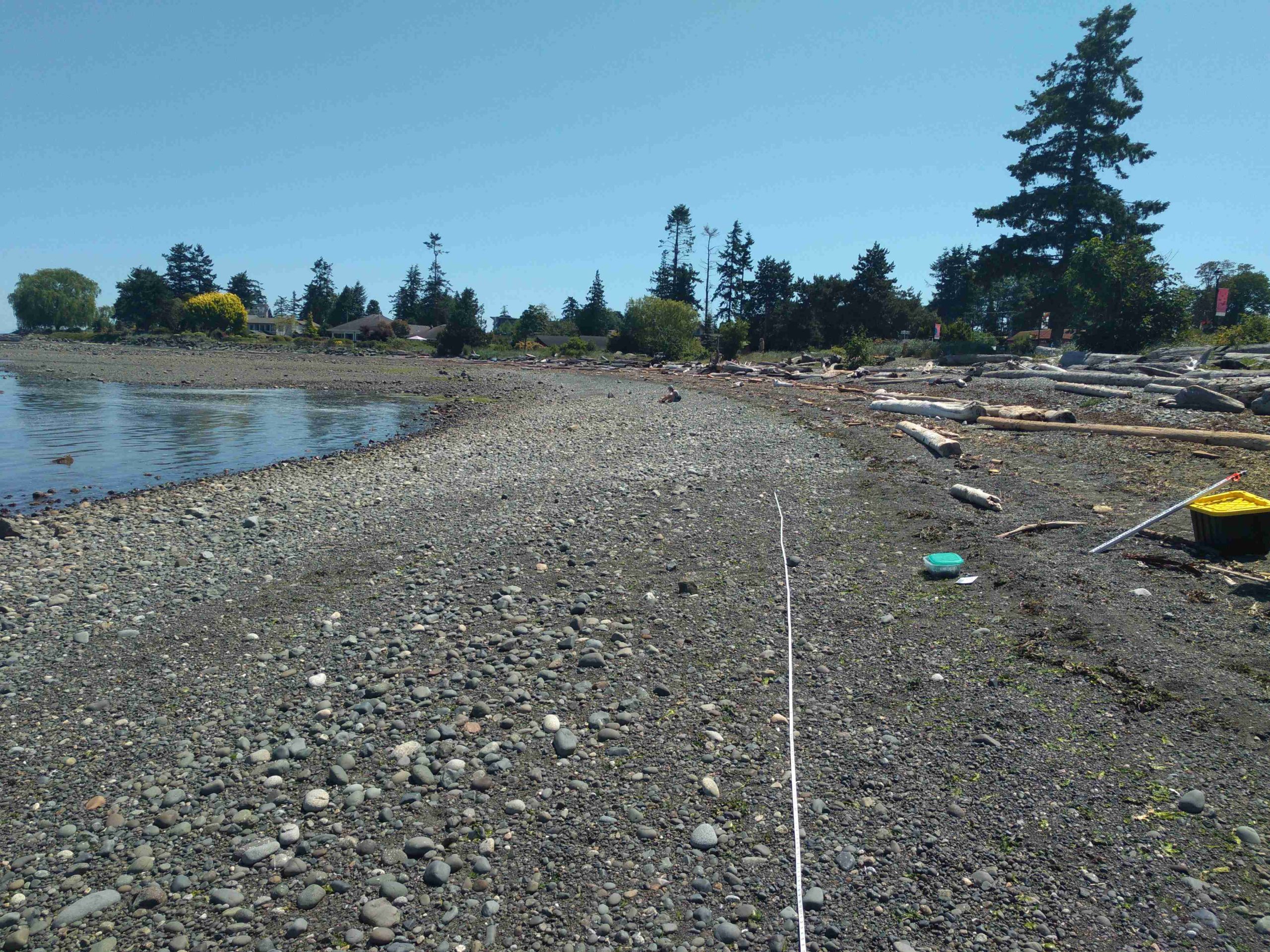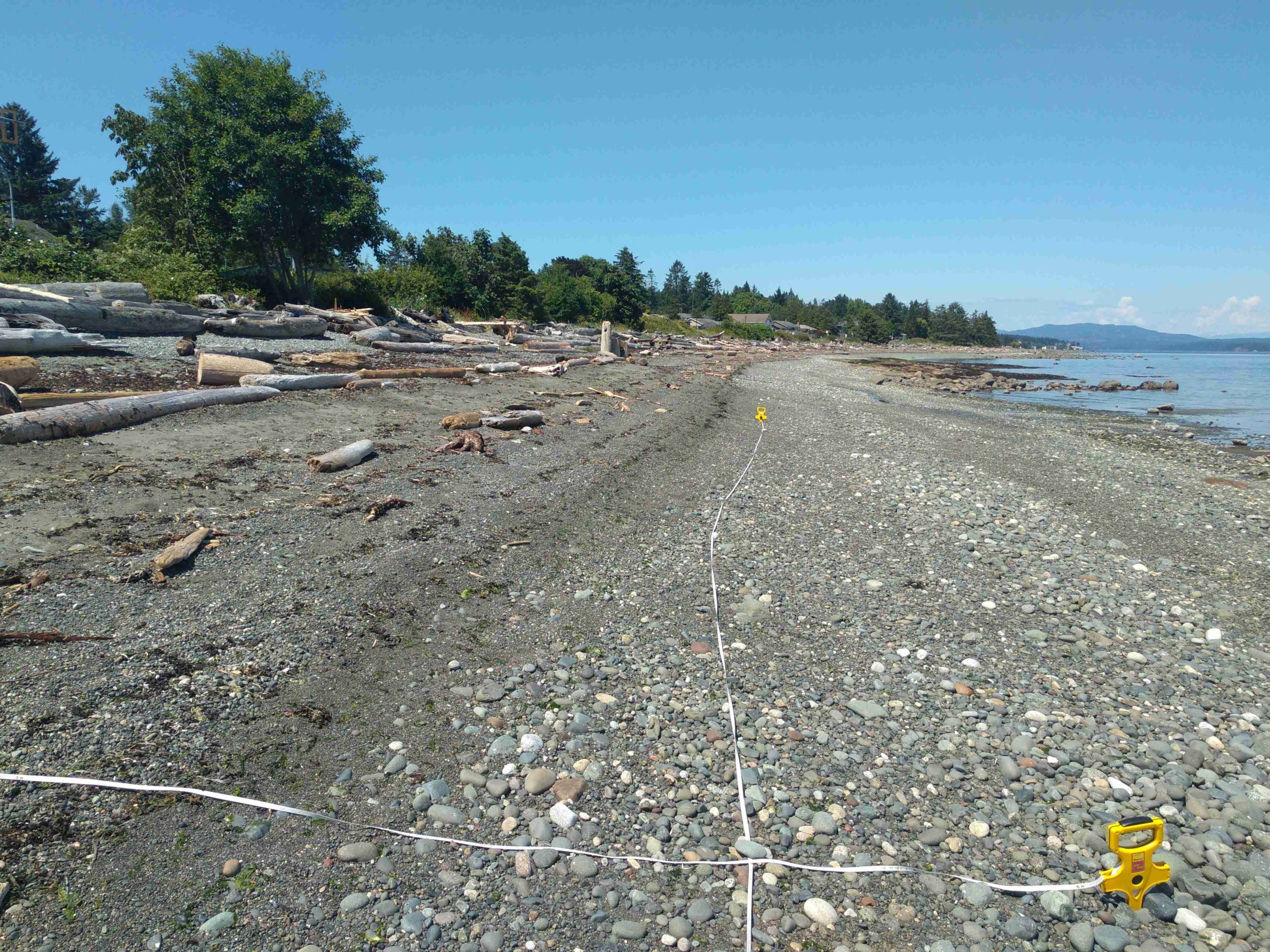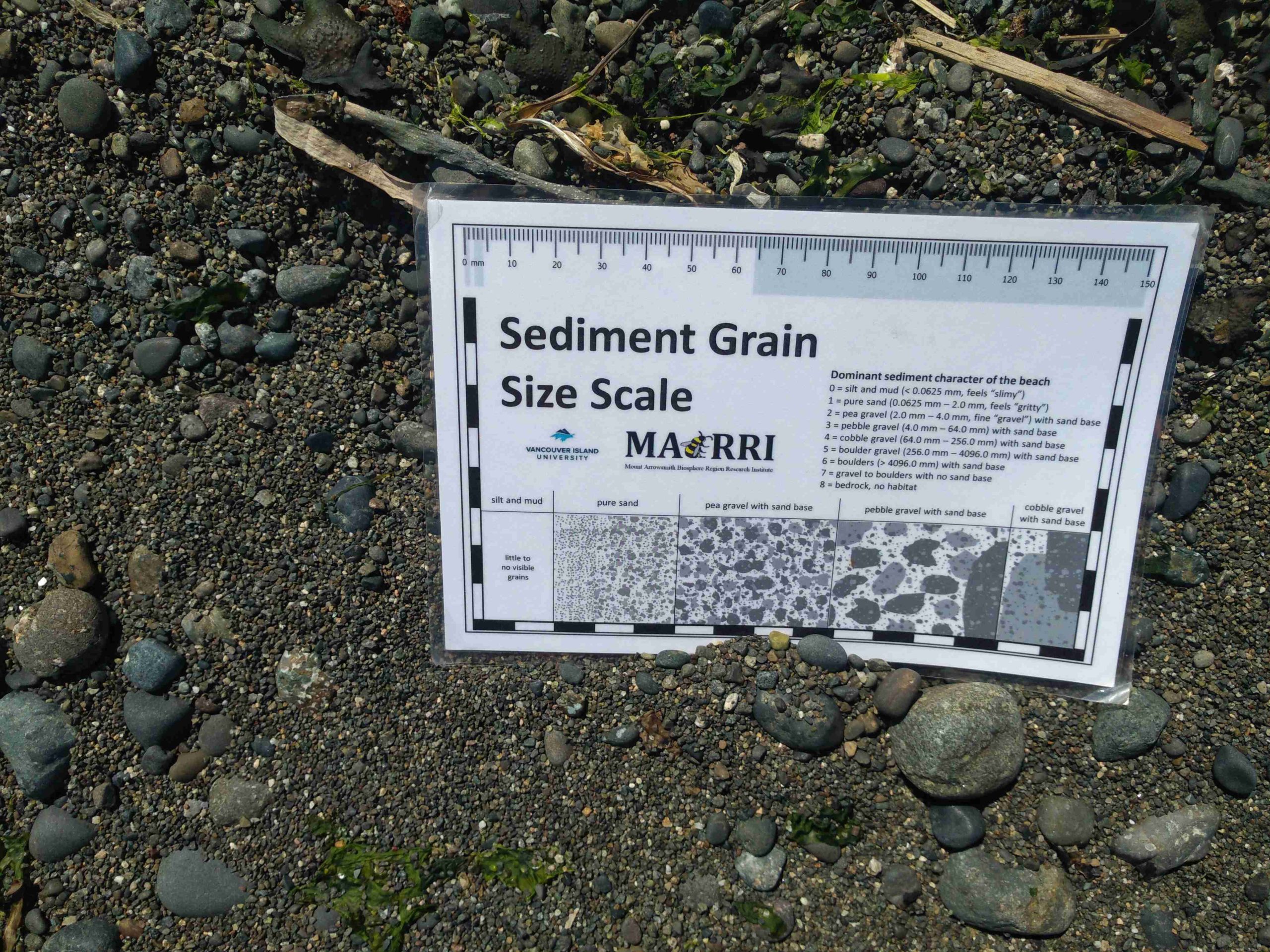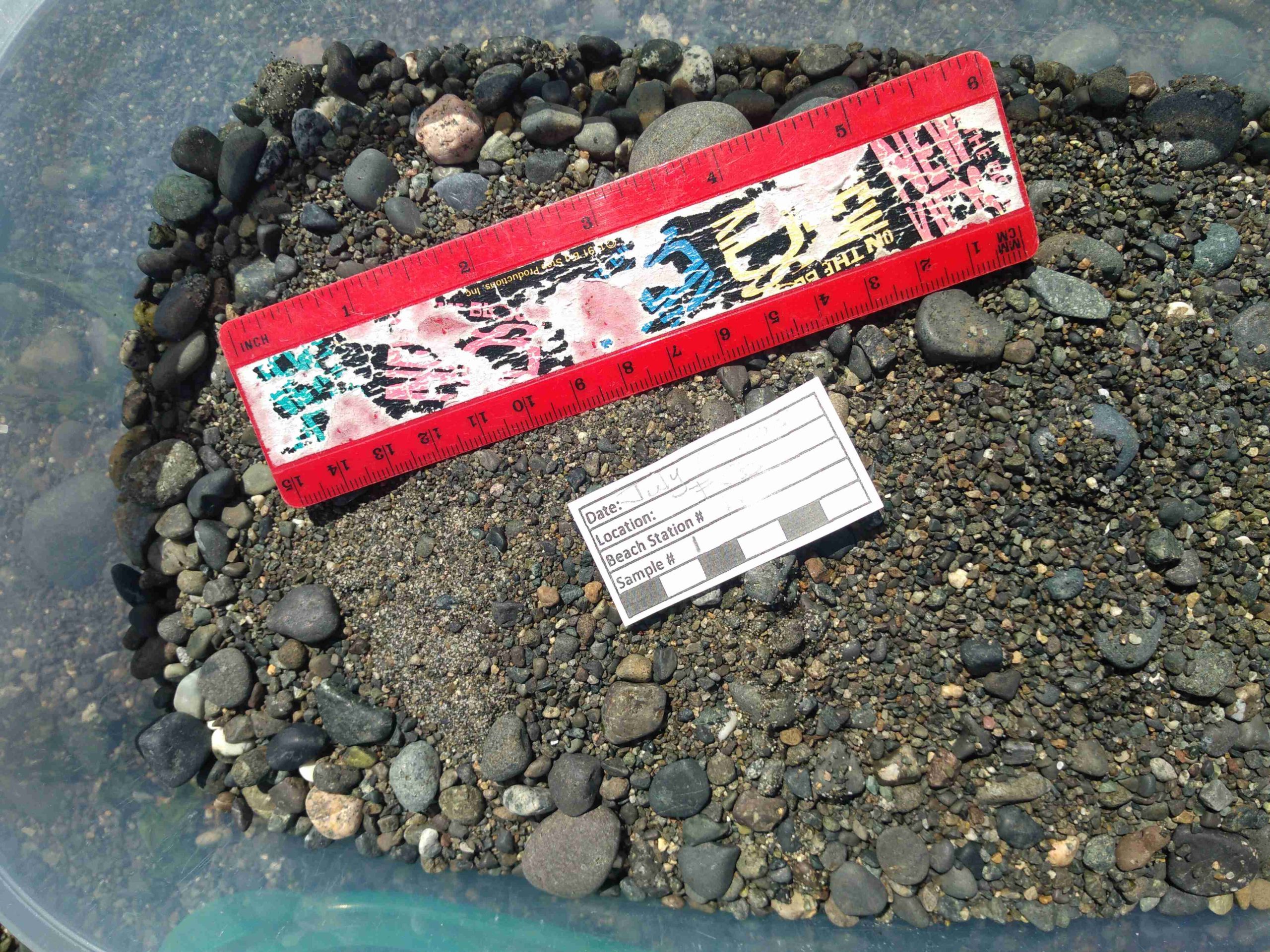Project Watershed’s Guide to Documenting Forage Fish Habitat
- Backshore and Landmark
- Right shore
- Foreshore (looking out at the ocean)
- Left shore
- Sediments (use sediment card against the sand)
- 4L container with label and an object for scale
We have also adopted the following naming conventions for these photos.
Site photo labeling scheme: Site-Station_sample_aspect_Date(YYYYMMDD)
Example: FJP-1_1_Foreshore_20210809 – This translates as the forshore of Frank James Park, station 1, sample 1 on August 9th, 2021.
Egg photo labeling scheme: DATE of detection (YYYYMMDD)_Site-Station_Sample_Species_Alphanumeric number (for if there are multiple photos for the same date (e.g., A1, A2)
Example: 20201130_KB-1_1_PSL_A3 – This translates as the 3rd photo of eggs found at Kye Bay, station 1, sample 1 of Pacific sand lance, taken on November 30, 2020.
This method aids Project Watershed in filing photos and analyzing them for changes due to seasonality, weather events and time. We kindly ask groups to submit photos and datasheets immediately after each sampling event.
We have included an example of a set of labeled photos on this page for your reference. All photos have been taken by our Forage Fish Research Assistant, Virginia East.
Photo Documentation of Frank James Park Beach
Photo Documentation of Eggs
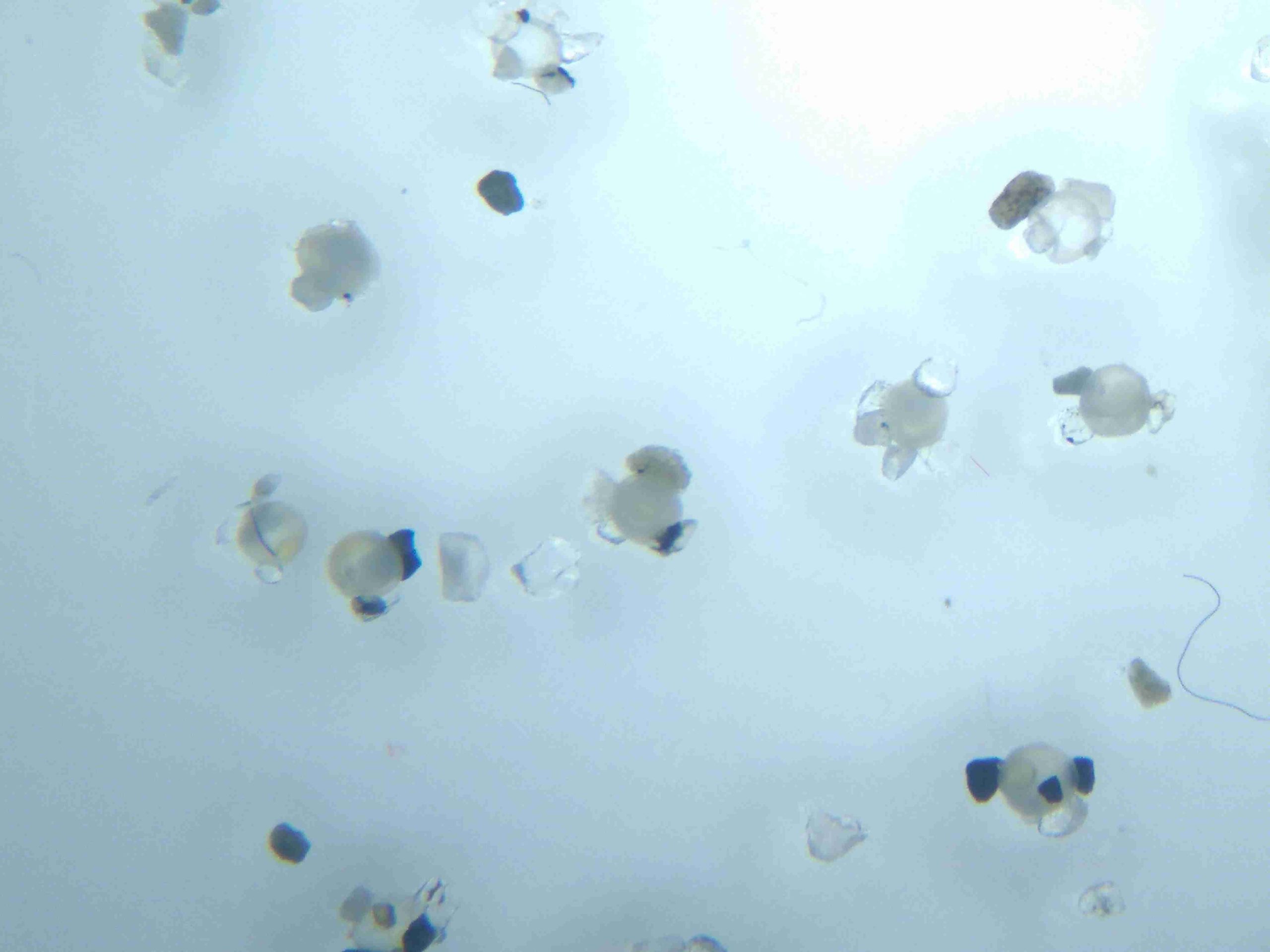
20201130_KB-1_1_PSL_A3
Related Posts
Fall and Winter Forage Fish Sampling
We’re gearing up for the fall/winter season of forage fish sampling!
Mallard Creek Riparian Planting
We will be planting native riparian species along a section of Mallard Creek that we recently cleared of invasive Reed canarygrass.
Fall Planting at Kus-kus-sum
We are looking for volunteers to assist us with planting native trees, shrubs, and marsh plants at Kus-kus-sum this fall!
A New Day for Forage Fish
Project Watershed and the Coastal Forage Fish Network (CFFN) are celebrating Surf Smet Day on October 25th! This adds another day on which to celebrate and raise awareness about beach spawning forage fish as Pacific sand lance are celebrated on a day in December.
Fall Work at Kus-kus-sum
We are looking for volunteers to assist us with weeding out invasive plants to make room for the native plants arriving later this fall!
Forage Fish Survey Techniques Workshop
The Coastal Forage Fish Network (CFFN) is hosting two one-day workshops to introduce development considerations and methods to survey for beach spawning forage fish for projects that may impact beach spawning forage fish.


